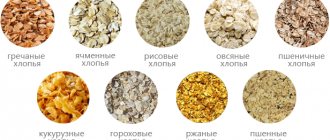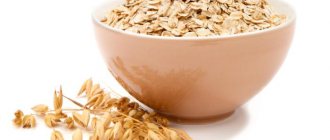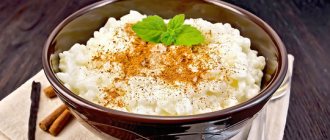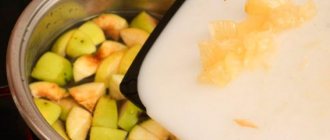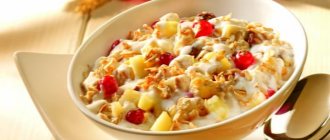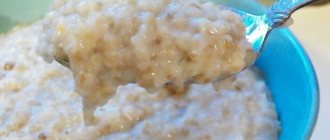The benefits of buckwheat as a food product are undeniable. The unique vitamin and microelement composition, easily digestible vegetable protein, the presence of fiber and the absence of allergy-causing gluten, ease of preparation and excellent taste have made this porridge a favorite in our country, and it is constantly present in the diet of almost every family. But during special periods of life associated with motherhood, many women wonder whether it is possible to consume this cereal and how useful buckwheat is during breastfeeding, whether the baby will have some kind of unpleasant reaction.
Is it possible to mix breast milk with formula, cereals and other foods?
The nutrition of a child in the first year of life raises many questions: is it possible to dilute porridge with breast milk to make it tastier and more satisfying? Or add it to the mixture if there is not enough milk? And is it acceptable to mix several portions of expressed product to feed a baby? These and many other questions will be answered today by pediatrician, author of books on health, development and education of children Olesya Vladimirovna Butuzova.
— Olesya Vladimirovna, tell us what mixed feeding is? What are the main pros and cons of this type of nutrition for a child’s digestion and development?
— We can talk about mixed feeding if the baby receives both breast milk and an adapted milk formula. Most often, the need for this type of nutrition is due to the baby’s poor weight gain due to a lack of mother’s milk. Also, supplementary feeding in the form of a mixture may be relevant when the mother is hospitalized, is forced to leave, or goes back to work.
Pediatricians distinguish two types of such nutrition: alternate and sequential.
With alternating feeding, as is already clear from its name, the baby receives the mother’s breast at one feeding, and formula at another or even several subsequent feedings.
With the sequential option, the baby suckles the breast until it is completely empty, and if he shows anxiety because he is not full, then he is fed with formula.
Let's talk about the advantages of such nutrition:
- Firstly, with mother's milk the child receives immunoglobulins
, that is, protection against infection. - Secondly, the mixture ensures saturation, weight gain and supply of the body with vitamins and microelements. Many mixtures are rich in L-carnitine
, a substance that promotes weight gain. - Mixed feeding maintains close contact between mother and baby through attachment to the breast, which is important for the baby’s comfort.
But the downsides are also inevitable:
- Formula milk may, although not always, increase the likelihood of constipation.
- Difficulties often arise in selecting a mixture that the child will eat with pleasure.
- And finally, financial expenses. A good mixture imposes certain costs on the family.
- Let's talk about mixing.
Is it possible to mix different portions of breast milk? And if so, how to do it correctly?
- Each portion of breast milk, no matter how small, should be stored in a separate sterile container in the refrigerator for no more than a day or frozen - always labeled - for six months.
Different portions of milk can only be mixed immediately before feeding the baby.
— Is it possible to mix expressed milk, which has been stored for some time, with fresh milk?
— This option is theoretically possible, but I just don’t see the feasibility of it. Why express fresh milk and mix it with “old” milk? In this case, it is better to breastfeed the baby and then supplement with previously expressed product.
— Is it possible to mix formula with breast milk? Do these mixtures need to be diluted with water? Can it be diluted partly with water and partly with milk? And if so, how to do it correctly?
- To be honest, I don’t understand at all why you mix breast milk with formula. If the mother has a little milk, then you need to breastfeed the baby, and then supplement him with formula. Mixing formula and milk in one bottle is completely impractical.
— Is it possible to mix porridge with breast milk?
- But you can dilute porridge with breast milk. If there is excess milk that the mother can express after feeding, then it is permissible to add it to instant (not requiring cooking) porridge. A familiar taste can make it easier for your baby to introduce a new food.
— Is there a difference between feeding a child breast milk with supplementary feeding with formula and feeding it immediately with formula and breast milk?
— I’m still against diluting formula with breast milk: I just don’t see the point in it. If you have 30 ml of milk, you can feed the baby with it, and then supplement him with a good adapted milk formula.
— Porridge made with breast milk—why do questions arise about its preparation?
- Why do such questions arise? Because some mothers have excess milk, they express it and understand that this is a valuable and important product. This means they want to use it to breed cereals. In fact, the composition of instant porridges has already been adapted to the child’s needs, and mother’s milk in this case can only add the usual taste.
— Can cooking porridge with breast milk make it easier to introduce complementary foods?
-What kind of porridge are we talking about? If we talk about instant, that is, diluted, then this is already a complete food, rich in vitamins and microelements. You can add a little breast milk to it for taste. If the mother decides to cook porridge from crushed cereals and she has expressed breast milk, then it is, of course, much better than cow milk.
— How to cook porridge with breast milk?
- The same as with cow's - pour milk over the cereal and simmer over low heat until cooked. But this destroys some of the beneficial substances in breast milk. Therefore, you can cook the porridge in water, cool it a little and then add warm breast milk.
— At what age can you feed your baby cereal with breast milk?
— We introduce porridge as a second complementary food, after hypoallergenic vegetables have become established in the child’s diet — unless your pediatrician recommends otherwise. Pediatricians advise giving children milk porridges that are diluted with water, and dairy-free porridges can also be mixed with breast milk if the mother has the opportunity to express after feeding.
— Is it possible to mix MAMAKO® Premium goat milk formula with breast milk for mixed feeding?
— MAMAKO® Premium mixture contains goat’s milk, which is better digested and absorbed by the child’s body than cow’s milk, which is the basis of many children’s products. In addition, the mixtures contain additional useful inclusions:
- Pre- and probiotics to restore and normalize intestinal microflora,
- Nucleotides to strengthen the immune system,
- Lutein for vision.
Another advantage of this diet is the absence of palm oil, which was replaced with palmitic acid from milk fat. This helps prevent constipation, colic and regurgitation.
Summarizing all of the above, I want to once again highlight the main thing: mixing different portions of breast milk, of course, is possible, but only before feeding the baby. It is again possible to use mother’s milk to prepare baby cereals, taking into account a number of simple recommendations, but I see no point in diluting the mixture with breast milk and do not recommend this to young mothers. Pediatrician Olesya Vladimirovna Butuzova
*The ideal food for an infant is mother's milk. WHO recommends exclusive breastfeeding for the first 6 months. MAMAKO® supports this recommendation. Before introducing new foods into your baby’s diet, consult a specialist.
Source: https://mamako.ru/blog/7-12-mes/mozhno-li-smeshivat-grudnoe-moloko-so-smesyu-kashami-i-drugoy-pishchey/
Is it possible for children to cook porridge with breast milk?
After the birth of the child, the mother is on a fairly strict diet. But at the same time, cereals are a necessary product in the diet. Porridge is the most common dish among them. Naturally, the question arises: what kind of cereals can be consumed while breastfeeding? After all, there are a huge number of them, and with such abundance it’s easy to get confused.
Types of porridges
Surely everyone knows what kind of porridge there are. But you can still remember:
Some of them may be unfamiliar to you. But each of them has a number of advantages and disadvantages. Their taste is different and so are their cooking methods.
Buckwheat
Very tasty, low in calories, but nutritious. It is for these reasons that it is often used in diets. There are practically no allergies from it, so it is allowed almost immediately after childbirth. In addition, buckwheat contains a large amount of iron, due to which it helps to raise hemoglobin, which after childbirth (and, consequently, blood loss) is relatively low.
The fact that buckwheat has a slight laxative property can be both positive and negative. This should be considered strictly individually, based on the state of your digestion and the baby. You shouldn't consume this porridge too much. Excess may cause dizziness and general weakness.
Rice porrige
Rice is a very useful product in that it perfectly cleanses the body, acting on it as an absorbent (that is, absorbing harmful substances). It normalizes sleep, improves the condition of hair and skin.
Useful for kidney and heart diseases. Since rice is a source of slow carbohydrates, it is perfect for the diet. Its energy is released gradually, giving a feeling of satiety and increased strength for a long time. Hypoallergenic product.
It is also controversial that it has a fixing effect. People suffering from constipation should be careful with it and consume it no more than once a week.
Corn porridge
This cereal is not so common in Russia. But it is very useful: it improves digestion, increases immunity, and metabolism returns to normal. The condition of the oral cavity also improves. This is a gluten-free porridge.
It has a laxative effect, which is why it causes digestive upset when consumed in excess. May cause an allergic reaction (redness). In addition, with large consumption it leads to excess weight.
Oatmeal
Oatmeal is quite high in calories, but it is recommended by nutritionists.
This happens for the reason that it contains a lot of carbohydrates, which quickly saturate the body and are slowly consumed, that is, a feeling of satiety remains for a long time. It cleanses the skin well, giving it natural beauty.
Thanks to the beta-glucan it contains, it helps fight cholesterol plaques. It fights well against fatigue, drowsiness, and improves appetite.
Gluten, which is contained in this cereal, is unfavorable for a newborn, so you should abstain from it in the first month. It is contraindicated for kidney disease. Excessive amounts of oatmeal flush calcium from the body.
Wheat porridge
It is obtained by processing durum wheat. It has a general strengthening effect and improves the immune system. Cereals regulate metabolic processes and improve the digestion process. Regular use of it in the diet will help cleanse the body of waste and toxins and reduce weight.
You may be allergic to it. It is also used with caution for gastritis.
Barley porridge
It is often used as a side dish. In addition, this is the most common porridge in the army. It helps fight aging as it contains collagen. It improves vision, hair and nails. This cereal can cause constipation and increased gas formation.
Millet porridge
But at the same time, it is prohibited in cases of low stomach acidity and certain diseases of the thyroid gland (hormones).
Barley porridge
It cleanses the body of toxins accumulated in it. Helps well with joint diseases. Useful for brain activity, memory and thinking. For diabetes and acute diseases of the digestive system, it is included in the diet menu.
It is quite allergenic, so you should not introduce this grain into your diet before 3-5 months after giving birth.
Barley porridge
It is beneficial for the digestive organs. Cleanses the body of toxins and waste. Helps reduce weight. It has a calming effect, affecting the nervous system. The substances it contains help in the production of collagen, which has a beneficial effect on the condition of the skin. That is, she ages less.
Yachka is prohibited for diseases of the stomach and intestines. Quite high in calories; if consumed excessively, it adds extra pounds. An allergic reaction to it is possible.
Semolina
Semolina is considered the most useless porridge. But at the same time, it is recommended to eat it during the recovery period after operations. It is also useful for kidney diseases.
Some people believe that semolina helps you lose weight. But this is not so, on the contrary, she is gaining kilograms. It is very high in calories.
In addition, it flushes calcium from the body, which has a bad effect on the condition of the bone skeleton. The gluten it contains in large quantities often causes allergies.
At this time, according to the latest research, this porridge is not recommended for infants - up to 1 year old, and for nursing mothers - up to 6 months of age.
age of the child when introducing porridge into the mother’s diet
Porridge in the diet of nursing mothers
Even with the apparent hypoallergenic nature of some cereals, they must be introduced into your diet gradually. You should try starting with 1-2 tablespoons of cereal cooked in water. It should be cooked without sugar and with a minimum amount of salt. Later, the volume can be increased to 100-150 g at a time, but no more than 2 times a day.
At first, all porridges should be on water. From about 2-3 months you can try milk porridges.
They have a greater effect on lactation, increasing the amount of milk. When breastfeeding, it is better not to use quickly prepared cereals, but to give preference to regular ones, since in the first case they are treated with special compounds, which can cause allergies in the baby. Multigrain foods should also be put aside for a while and started to be included in the diet after 6-8 months.
Milk porridge is a great start to the day; it will help you wake up and fill you with energy. On water they can serve as an independent dish or as a side dish. Cereals can also be cooked with meat and vegetables. A good addition to dairy products would be fruits, dried fruits and nuts.
Porridge during breastfeeding is a necessary dish in a mother’s diet. Without them, proper nutrition is impossible. They have a beneficial effect on the body of mother and child. But do not forget about individual intolerance. But you need to try each of them to see which one is best.
Source: https://rody-beremennost.ru/voprosy/mozhno-li-varit-detyam-kashu-na-grudnom-moloke
How to eat buckwheat during lactation?
When consuming buckwheat porridge during lactation, you should follow the following rules.
- For the first 3 months, cook porridge only in water, since many babies suffer from lactose deficiency, and cow's milk protein can provoke an allergic reaction. Over time, buckwheat porridge can be diluted with milk.
- Buckwheat should be introduced into the diet gradually. To begin with, try 1-2 teaspoons, and observe the baby’s reaction for two days. In the absence of an allergic reaction, you can safely consume buckwheat.
- The norm for consumption of buckwheat is 150 grams per day.
- Before use, buckwheat must be washed and cleared of black particles.
Porridge with milk mixture
23.09.2019
Pros of using formula milk
What porridges can be cooked with the mixture?
How is porridge cooked using the mixture?
Myths about infant formula
When a baby appears in a family, parents want to give him only the best: love, care, attention and, of course, proper healthy nutrition. At first, mother's milk is enough for the baby, but when he grows up a little, the important period of introducing complementary foods begins.
The baby begins to try new foods, one of which is porridge.
At this time, parents immediately have a number of questions: how to feed the child so that his nutrition is balanced, does not put unnecessary strain on the gastrointestinal tract and does not cause allergies? And is it possible to dilute porridge with a mixture familiar to the baby?
It is important!
It is possible and even necessary to dilute porridge with the mixture that a child who is on artificial and mixed feeding receives. It is only important to remember that only dairy-free porridges can be diluted with the mixture, since industrially produced milk porridges already contain a milk base.
A woman’s nutrition during breastfeeding deserves special attention. Products must be chosen carefully, prepared correctly, and consumed in moderation. It is important that mommy has a complete and balanced diet. An ideal side dish, as well as an independent dish, is porridge.
They become the main source of complex carbohydrates and provide energy. Depending on the type of cereal, each porridge contains a certain set of micronutrients. Fiber, present in large quantities, regulates intestinal function. B vitamins affect the functioning of the nervous system. Vitamin E improves the condition of bone tissue and epidermis.
Calcium along with vitamin D is extremely important for nursing mothers.
You can start eating most cereals while breastfeeding already in the first month. They are introduced into the child’s diet no earlier than after six months. If the baby is gaining weight well, then complementary feeding begins with vegetables, and porridge is given for the first time at 7-9 months.
Rice
You can eat rice porridge from the first days of breastfeeding. The cereal does not contain gluten and is not capable of causing skin reactions in a child. However, it may affect stool.
If the baby has problems with bowel movements or the mother has postpartum constipation, it is not recommended to eat this dish during breastfeeding. When digestion is restored, you can use it up to 2 times a week.
Rice porridge is useful because it is a good antioxidant and performs a fixing function. It contains vitamins H, E and B, and also contains phosphorus, sulfur and magnesium.
Wheat
This cereal contains gluten. If a child has an intolerance to this substance, then it is impossible to eat wheat porridge during breastfeeding. This product should be introduced into the diet no earlier than a month after birth.
On the first day, you can eat up to 20 grams of ready-made porridge, after which you take a break for a day and, if there are no negative reactions from the child’s body, double the dose. The benefit of wheat porridge lies in its rich composition.
There are vitamins of group B, PP, E, zinc, potassium, magnesium, calcium, iodine.
Corn
The absence of gluten in corn porridge allows a woman to try it immediately after giving birth. Experts allow you to eat it at least every day if there are no stomach problems. Corn porridge on breastfeeding normalizes the intestinal function of a woman and her baby. The product is useful because it contains vitamins A, E, C, supplemented with calcium, phosphorus and magnesium.
Manna
Often women doubt whether it is possible to eat semolina while breastfeeding. There is no clear answer from experts here. Such a dish is considered “empty”.
Semolina porridge is recognized as a nutritious product with a pleasant taste, but it has no benefits. The presence of gluten in semolina can cause a reaction in a child.
Despite the fact that the cereal contains calcium, it is not absorbed in the body due to phytin, which is also found in crumbly cereal.
https://youtu.be/8VgtiDCGPxQ
Semolina does not have a specific effect on the child's stool, but it does not contain any fiber. This means that the intestines will “sleep” after consuming it. It is permissible to try such a dish no earlier than 3-4 months after giving birth. Due to allergenicity, introduce 10 ml into the diet, and consume no more than 1-2 times a week.
Millet
You can eat millet porridge while breastfeeding without fear. It does not cause allergies and has a beneficial effect on the intestines. However, it is “heavy” for the stomach.
Therefore, if you have abdominal pain, you should minimize its consumption. You can introduce it into your diet from the first day of breastfeeding. The benefit of millet porridge is that it is an excellent antioxidant.
Cereals contain iodine, magnesium, calcium, potassium, sodium, as well as vitamins that support heart function.
Pearl barley
Pearl barley porridge during breastfeeding should be introduced into the diet no earlier than six months after birth. It is beneficial for the body and does not cause allergies. However, the dish increases intestinal motility and causes bloating. While the child has colic, it is better to avoid barley.
Oatmeal
Hercules porridge on GW is considered a good option for a hearty breakfast. However, it does contain gluten. Mothers of children prone to allergies should avoid this dish. It is believed that oatmeal has a negative effect on the heart and is contraindicated in case of kidney failure. The benefits of oatmeal include vitamins B, K, E, C and A.
Barley
Barley porridge can be introduced in the first week of breastfeeding. It does not cause negative reactions from the baby’s digestive tract and does not form allergies.
You can eat this dish up to 4 times a week. It is believed that barley porridge increases the body’s immune defense, saturates it with vitamins PP, E, B, potassium, phosphorus and magnesium.
In addition, it helps to recover faster after childbirth and lose weight.
Linen
Despite its low popularity, flaxseed porridge is extremely beneficial for a nursing woman. It strengthens the immune system, increases energy, and saturates the body with folic acid. The dish has a beneficial effect on lactation and prevents gas formation in the baby. You can eat flaxseed porridge 2-3 times a week.
It should be noted that raw flax seeds are contraindicated during breastfeeding, so the porridge must be thoroughly boiled until fully cooked.
Pea
Pea porridge during breastfeeding has a beneficial effect on the mother's body. This product cleanses the bloodstream of waste and toxins and improves intestinal function. Tryptophan contained in peas has a positive effect on a woman’s nervous system. However, in the early stages of breastfeeding, it is better to avoid this dish.
Peas are a provocateur of gas formation in any form. Even well-cooked and mashed porridge will have an effect on the baby. After eating this dish, night colic will be inevitable.
Spelled porridge
During breastfeeding, spelled porridge can be introduced into the mother’s diet in the first month. It is beneficial for the body in that it normalizes sugar and cholesterol levels, which means it helps to cope with excess weight. The dish also stimulates the digestive tract. Thanks to a rich set of micronutrients, spelled porridge increases stress resistance, which is so necessary for new mothers.
A properly prepared product does not have a negative effect on the child’s condition. Therefore, while breastfeeding, a woman can eat spelled porridge with a break of 1-2 days.
Cooking recommendations
In order to get the benefits of porridge and not harm the baby with your diet, during breastfeeding all dishes must undergo thorough heat treatment:
- you need to cook rice porridge for half an hour, for 1 cup of cereal there are 2 cups of liquid;
- millet and corn porridge is cooked for up to 40 minutes in a ratio of 1:3;
- pearl barley porridge can be cooked for up to 1.5 hours; pre-soaking it in warm water will help reduce this time by half;
- oatmeal and rolled oatmeal are boiled for 5 to 15 minutes, depending on the size of the grains;
- barley and peas cook for 25-35 minutes;
- flax and spelled porridge requires cooking for half an hour.
If desired, you can add dried fruits to breastfeeding porridge: prunes, raisins, dried apricots, dates. A small amount of nuts is allowed: cashews, walnuts, pine. It is better not to add honey and jam to the prepared dish, as these sweeteners can cause allergies in the baby.
If breastfeeding continues after a year, then at this age the mother can introduce apricot and yellow plum jam into her diet. If you are not allergic, you are allowed to try red varieties of jam.
You can add condensed milk to porridge when the baby is 6 months old, but to get a sweet taste it is better to replace it with half a spoon of regular sugar.
In the first months, it is recommended to cook all porridges in water. By six months, a nursing woman can add 20-30 ml of milk to the finished product. It is also important to consider:
- porridge can be eaten for breakfast, lunch or dinner;
- the optimal single serving is 40 grams of cereal (raw);
- If a child is constipated, do not eat rice porridge;
- if the newborn is bothered by colic, then barley is excluded;
- An allergy to gluten in a baby prohibits the consumption of cereals containing it.
You should not eat packaged instant cereals, because they contain flavorings and dyes. It is better to give preference to natural cereals, and add permitted taste improvers to them - nuts, dried fruits, berries.
Source: https://vseogv.ru/zdorove-i-pitanie-mamy-na-gv/kashi-pri-grudnom-vskarmlivanii
What cereals can a nursing mother eat while breastfeeding?
Porridge is the optimal breakfast for a nursing woman. Cereals after childbirth help restore intestinal motility, saturate the body with useful substances, and improve milk production. The diet of a nursing mother has a number of restrictions.
To figure out which cereals can be eaten during breastfeeding immediately after childbirth, and which can be introduced by 3-6 months after birth, you need to take into account the characteristics of cereals.
Despite the fact that all cereals are healthy, some of them can affect the child’s well-being.
Porridge is an indispensable product in a nursing mother’s diet, allowing her to saturate her body, tired after childbirth, with useful microelements and vitamins.
Rules for eating porridge during lactation
- After childbirth, cereals are cooked in water. Cow's milk protein often causes allergies in infants. A negative reaction can manifest itself as a rash, increased gas production, colic, and rumbling in the tummy.
- Each type of cereal is introduced into the menu gradually, starting with a serving not exceeding 50 g.
This rule especially applies to cereals containing gluten - a protein of plant origin with a high degree of allergenicity. - A mixture of cereals, including different types of cereals, is introduced into the menu when the child is already 6 months old. This combination can lead to digestive upset in the baby. Semolina is also a cereal that causes undesirable reactions.
- If the baby has a tendency to constipation, the nursing mother needs to limit the consumption of rice, and, conversely, include it in the menu if bowel movements are too frequent.
- Barley can cause increased gas formation in infants.
- It is better to replace plain butter with melted butter during breastfeeding.
After heat treatment, this product is better absorbed and less likely to cause allergic reactions. - During the first 1-3 months after childbirth, it is useful to eat cereals with baked apples and pears. By the 4th month, you can add dried fruits and bananas to the dish.
- Too sweet cereals during breastfeeding cause fermentation in the intestines of the mother and child.
For this reason, you should not add a lot of sugar or raisins to them. - Sensitivity to a particular product is often inherited.
This feature should be taken into account when choosing cereals. If a nursing woman experienced discomfort after eating any cereal before giving birth, you should not eat it, even if it is very healthy. There are many grains - you can always find a worthy replacement.
If rashes appear on the child’s skin after eating porridge, problems with digestion, or an inappropriate dish are excluded for a while. After some time, the introduction of the product is repeated.
Buckwheat with milk during breastfeeding
- Buckwheat porridge with milk during breastfeeding is an indispensable dish with a high calcium content, which helps in the fight against osteoporosis, strengthens nails and hair, and improves skin condition.
With regular consumption of this cereal, you can achieve strengthening of the teeth not only in the mother, but also in their proper formation in the baby.
- B vitamins and magnesium in buckwheat ensure the functioning of the cardiovascular system, restore the nervous system, and regulate blood pressure.
- The low glycemic index helps regulate blood sugar levels.
- The presence of rutin promotes an antioxidant effect and restores blood vessels.
- Hormonal changes in the body of a nursing mother lead to disorders of the digestive system, and problems with bowel movements appear. Buckwheat copes well with these problems. It gently cleanses the intestines and brings the gastrointestinal tract back to normal.
- Buckwheat improves blood circulation and strengthens vision. Helps restore strength and restore the functioning of the immune system.
- With the help of buckwheat you can regulate your weight, but you should not get carried away with the buckwheat diet during lactation, because it can cause metabolic disorders.
